Trump has a strategic plan for the country: Gearing up for nuclear war
By Joe Cirincione | July 2, 2024
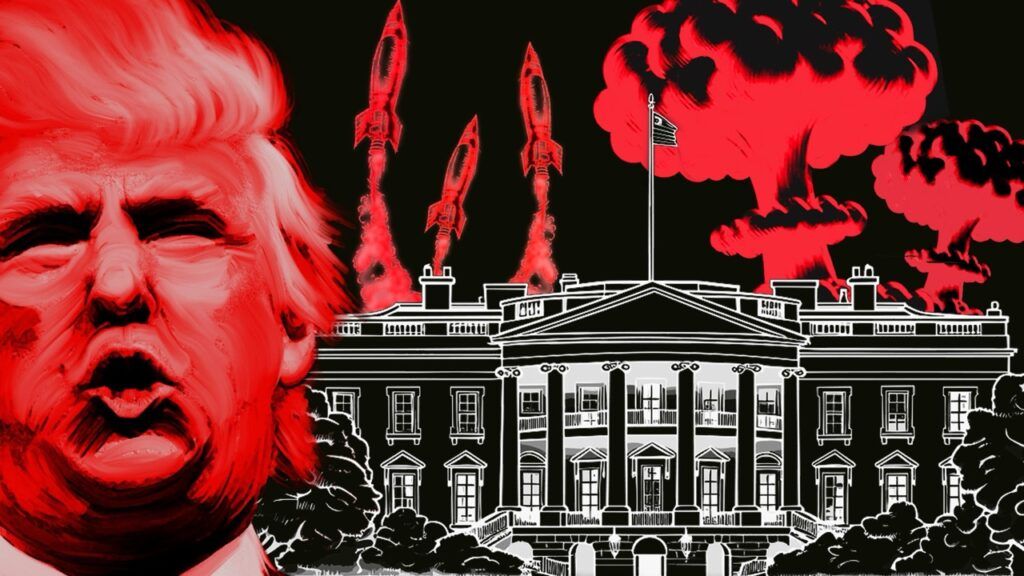 Illustration by Thomas Gaulkin / DonkeyHotey (Flickr, CC BY-SA 4.0) / VectorStock
Illustration by Thomas Gaulkin / DonkeyHotey (Flickr, CC BY-SA 4.0) / VectorStock
President Joe Biden has a terrible nuclear policy. A re-elected President Donald Trump’s would be much worse.
Biden has authorized the largest nuclear weapons budgets since the Cold War, delayed then squandered his chance to contain Iran’s nuclear program, and apparently has no policy for containing North Korea’s missiles and weapons. But a re-elected Trump would put nuclear weapons programs on steroids, trash what remains of the global arms control regime, and likely trigger new nuclear weapons programs in more other nations than we have seen at any time since the early 1960s.
Trump’s nuclear policy is all spelled out in a new conservative manifesto by Project 2025, a coalition of over 100 far-right groups led by the Heritage Foundation, which is widely seen as the template for a possible Trump 2.0 administration. If readers of the Bulletin have heard of Project 2025, chances are that they did not go through its 900-page book “Mandate for Leadership.” They should. This policy agenda, dubbed the “Conservative Promise,” is a blueprint for the most dramatic take-over and transformation of the US democracy in history.
The Project 2025 coalition members are staffed by over 200 former officials of the first Trump administration. These sophisticated Trump-movement MAGA operatives now know how to work the levers of government and have learned from what they see as their main mistake during Trump’s first term: leaving the “deep state” intact. These conservatives proudly served Donald Trump through his administration and attempted insurrection. They are now ready to help him complete the job and their plan is here for everyone willing to see.
“Our goal is to assemble an army of aligned, vetted, trained and prepared conservatives to work on Day One to deconstruct the Administrative State,” writes Paul Dans, a former chief of staff of the Office of Personnel Management during the Trump administration and now the director of Project 2025, in his foreword to the report. Russ Vought, the chief of staff of the Office of Management and Budget under Trump and now the president of the conservative think tank Center for Renewing America, agrees: “We have to be thinking mechanically about how to take these institutions over.” Vought vows to be “ready on Day One of the next transition,” adding, “Whatever is necessary to seize control of the administrative state is really our task.”
In the nuclear realm, “seizing control” would mean implementing the most dramatic build up of nuclear weapons since the start of the Reagan administration, some four decades ago. If this hawkish political coalition gets its way in November, the scope, pace, and cost of US nuclear weapons programs would increase all at once. Their plan, which seeks to significantly increase budgets and deployments of nuclear weapons and related programs and destroy the remaining arms control agreements, would dramatically increase the risks of nuclear confrontation as a result.
Nuclear proposals. The nuclear proposals are a key part of the Project 2025 coalition’s recommendations to reshape the Defense Department. This chapter is led by Christopher Miller, a former US Army special forces colonel who served as Trump’s last defense secretary. As Michael Hirsch reports in Politico, the agenda “is far more ambitious than anything Ronald Reagan dreamed up.” (In 1980, President Reagan ordered a massive nuclear buildup, which scholars now consider to have greatly escalated the Cold War.)
In condensed and translated form, Project 2025 proposes that a second Trump administration:
- Prioritize nuclear weapons programs over other security programs.
- Accelerate the development and production of all nuclear weapons programs.
- Reject any congressional efforts to find more cost-effective alternatives to current plans.
- Increase funding for the development and production of new and modernized nuclear warheads, including the B61-12, W80-4, W87-1 Mod, and W88 Alt 370.
- Develop a new nuclear-armed, sea-launched cruise missile, even though neither the administration nor the Navy has requested such a weapon, and the Navy has not fielded this type of weapon since they were retired by President George H.W. Bush in 1991.
- Increase the number of nuclear weapons above current treaty limits and program goals, including buying more intercontinental ballistic missiles (ICBMs) than currently planned.
- Expand the capabilities of the National Nuclear Security Administration’s weapons production complex, including vastly increasing budgets, shedding non-nuclear weapons programs at the national laboratories (such as those devoted to the climate crisis) and accelerating production of the plutonium pits that are the cores of nuclear weapons.
- Prepare to test new nuclear weapons, even though the United States has signed the Comprehensive Nuclear Test Ban Treaty that prohibits such tests and has not tested a full-scale nuclear device since 1992.
- Reject current arms control treaties that the coalition considers being “contrary to the goal of bolstering nuclear deterrence” and “prepare to compete in order to secure US interests should arms control efforts continue to fail.”
- Dramatically expand the current national missile defense programs, including deploying as-yet-unproven directed energy and space-based weapons, or as the report puts it: “Abandon the existing policy of not defending the homeland against Russian and Chinese ballistic missiles.”
- Invest in a sweeping, untested “cruise missile defense of the homeland.”
- Accelerate all missile defense programs, national and regional.
These proposals would add unnecessary new weapons to an already expansive nuclear arsenal. If implemented, these new and expanded programs would accelerate the nuclear arms race the United States is already engaged in and encourage the expansion—or initiation—of new nuclear weapons programs in other nations around the globe.
It is not as if the United States needs to spend more on nuclear weapons.
At $70 billion, President Joe Biden’s Fiscal Year 2025 budget request is already the most the country will have spent on nuclear weapons since the Cold War. Under Trump and now Biden, the United States has engaged in a sweeping replacement of nearly all existing nuclear weapons systems, including a new generation of strategic bombers (the B-21), strategic missile submarines (the Columbia class), intercontinental ballistic missiles (the Sentinel), several new warhead programs, and the development of new nuclear weapons, including smaller, “more usable” nuclear warheads and air-launched cruise missiles.
The Congressional Budget Office estimates that the currently planned nuclear weapons programs will cost $750 billion over the next decade (2023-2032). And the costs will rise every year: Biden’s requested $70 billion for the next budget is a 22 percent increase from last year. The total cost of the programs will approach $2 trillion. And there is more. The Biden administration also requested $30 billion for Fiscal Year 2025 for missile defense programs, much of which will be devoted to weapons designed to intercept long-range, nuclear-armed missiles.
The policy recommendations made by the Project 2025 coalition would substantially increase these costs. Unlike other generalized calls for more weapons, these conservative authors have developed a detailed plan for how to implement their apocalyptic vision and minimize any opposition. It is a far more specific plan than any before it, and more developed than anything groups trying to save what remains of the global arms control regime have even attempted.
Implementation plan. In March, the Heritage Foundation detailed the steps necessary to implement these proposals in asking the president to “revitalize the US strategic arsenal.” The authors propose that the next US president—meaning Donald Trump, but never mentioning him—immediately upon assuming office:
- Make a major speech soon after inauguration to “make the case to the American people that nuclear weapons are the ultimate guarantor of their freedom and prosperity.”
- Direct the National Nuclear Security Administration (NNSA), which is charged with producing all nuclear weapons fissile materials and the manufacture of all warheads, to provide monthly briefings in the Oval Office and to submit its budgets separately from the Energy Department, within which department the agency resides.
- Direct the Office of Management and Budget to submit to Congress a supplemental budget request to accelerate key NNSA projects and Defense Department nuclear weapons delivery systems (missiles, bombers, and submarines).
- Increase the number of deployed nuclear warheads by directing the placement of multiple warheads on each of the currently deployed Minuteman III intercontinental ballistic missiles. (Each missile in the current fleet of 400 ICBMs holds one warhead. Under this plan, the next president would order each missile to deploy multiple warheads by 2026. The new, replacement ICBM, the Sentinel, would also be fielded with multiple warheads.)
- Direct the production and deployment of new nuclear weapon types, including the sea-launched cruise missile (SLCM-N) and putting nuclear warheads on Army ground-launched missiles. (Both capabilities were eliminated by President George H.W. Bush in 1991.)
- Add nuclear capabilities to several hypersonic systems currently under development as non-nuclear missiles.
- Direct the Air Force to examine a road-mobile version of the Sentinel ICBM. (President Reagan investigated such a program in the early 1980s and found it to be highly controversial, expensive, and impractical.)
- Direct the expansion and enhancement of US nuclear weapons capability across the globe, including by pre-positioning nuclear bombs and aircraft in Europe and Asia. (The United States currently deploys 100 nuclear bombs abroad at five bases in NATO Europe.)
- Direct the NNSA to “transition to a wartime footing,” including the expansion and construction of facilities to produce plutonium and plutonium cores for nuclear weapons.
Implications for national security. Should these recommendations be implemented, they will result in a sharp decline in the security of Americans and a dramatic increase in the risk of regional and global conflicts. At the very least, the proposed programs will explode the national debt. With the defense budget already at $850 billion for Fiscal Year 2025 and the budget for nuclear weapons and related programs at over $100 billion, these new projects could add hundreds of billions of dollars to weapons development, production, and deployment costs. The Heritage Foundation estimates that these additional programs will cost “tens of billions,” but this is a gross underestimate.
The existing US strategic arsenal already exceeds what is required for any conceivable nuclear mission. The United States currently maintains a stockpile of some 3,708 nuclear warheads for delivery by missiles and aircraft. Of those, approximately 1,770 warheads are deployed, ready for use within minutes of an order to launch. The rest of the operational stockpile (1,938 warheads) is held in reserve for potential use. In addition, the United States has approximately 1,336 retired, intact warheads in storage awaiting dismantlement. The explosive yields of most of these weapons are 10 to 30 times greater than the bombs that destroyed Hiroshima and Nagasaki.
To put the power of this arsenal in perspective, one city destroyed by just one nuclear weapon would be a level of destruction not seen since World War II. Ten weapons burning 10 cities would be a catastrophe unprecedented in human history. One hundred such weapons would destroy not only the targeted nation but likely unleash a nuclear winter and subsequent famine that could destroy virtually all human civilizations—even those far from the conflict.
Increasing the US arsenal at the scale recommended by the Project 2025 would likely compel rival nations—including Russia, China, Iran, and North Korea—to increase their defense budgets, warfighting plans, and nuclear weapons developments and deployments to match what they will see as an increasing threat from the United States. Allied nations will also be caught up in the competition, fueling an already existing nuclear arms race: Japan, South Korea, and even Germany could be pushed over the nuclear line.
This would be the unintended consequence of an unleashed nuclear modernization. While each nuclear-armed state sees its programs as defensive, their adversaries see them as offensive programs striving for a military advantage. Each move engenders a countermove; each nation believes it is responding to the other. That’s how the security dilemma has spiraled since World War II. But the Project 2025’s recommendations go one step further: They are based on the belief that the United States would win any arms contest through superior technology, resources, and political will.
In 2019, former President Trump’s arms control negotiator Marshall Billingslea said: “We know how to win these races and we know how to spend the adversary into oblivion. If we have to, we will.”
But such programs would further weaken nuclear guardrails that are already gutted by the withdrawals from major arms control agreements—including most significantly, Trump’s withdrawal from the Joint Comprehensive Plan of Action that reduced, contained, and controlled the Iranian nuclear program and his withdrawal again from Reagan’s Intermediate Nuclear Forces agreement that eliminated most nuclear weapons deployed by the United States and Russia in Europe.
The erosion of the arms control and non-proliferation regime is not a defect of the proposals; it is one of its central goals. The Project 2025 authors believe that arms control has failed, and that treaties negotiated with both allies and rivals weaken Americans, rather than are protecting them. These views are not shared by most US allies. Those allied nations committed to restraining or eliminating nuclear risks will, therefore, increasingly doubt US leadership in international relations, weakening the alliance system so essential to US national security since the end of World War II.
Importantly, these proposed programs and activities will almost certainly have the United States abandon its commitment not to test nuclear weapons under the 1996 Comprehensive Test Ban Treaty. Should the United States conduct new nuclear tests, other nations will almost immediately follow suit, adding more fuel to the nuclear fire.
Taken together, the policies and programs advocated by the Project 2025’s self-proclaimed “mandate for leadership” would push the United States onto the precipice of an expensive, dangerous, and destabilizing nuclear confrontation—something not seen since the darkest days of the Cold War.
Together, we make the world safer.
The Bulletin elevates expert voices above the noise. But as an independent nonprofit organization, our operations depend on the support of readers like you. Help us continue to deliver quality journalism that holds leaders accountable. Your support of our work at any level is important. In return, we promise our coverage will be understandable, influential, vigilant, solution-oriented, and fair-minded. Together we can make a difference.


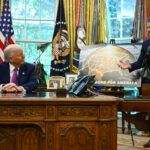









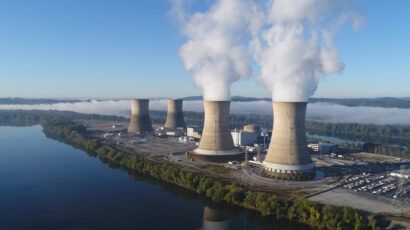

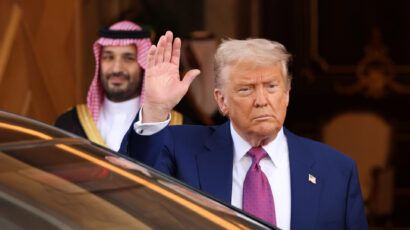
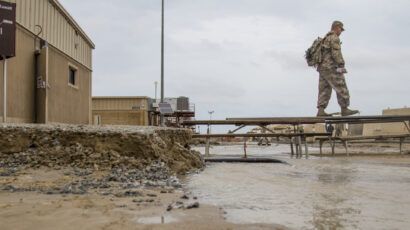
we need to get this info on network TV. Manly abc that gave us The Day After back in 83. we need to bust everyone out of that Let’s pretend everything‘s OK stupider . You won’t affect the maga of people, of course, but it’s time to scare the hell out of everyone on the fence. Thank you Joseph Cirincione.
Why Project 2025 is not and has not been a major talking point amongst the media is baffling. As Les Moonves, the former head of CBS, once stated: “Donald Trump is not good for democracy, but great for business” So ratings and ad revenue is all that matters. Our lives and democracy do not. https://www.hollywoodreporter.com/news/general-news/leslie-moonves-donald-trump-may-871464/#
Someone needs to remind Donald Trump of the FACT that a nuclear war cannot be won and must NEVER be fought. Hiroshima and Nagasaki were destroyed by relatively small (15 kiloton) atomic bombs; Japan surrendered days later. Now, however, these weapons are in the MEGAton range and are possessed by many countries. The inevitable result: an attack by one country will trigger an immediate retaliation by one or more countries, causing an end to life as we know it. Ideally, we must gather all the nuclear nations and agree on elimination of this threat.
Not gonna lie, Trump’s Project 2025 sounds pretty amazing.. even reading about it here with your massive leftist/anti-trump bias worded into the framing. Still sounds great. You’re gonna have a really hard time convincing sane people that “dismantling the administrative state” is a bad thing.